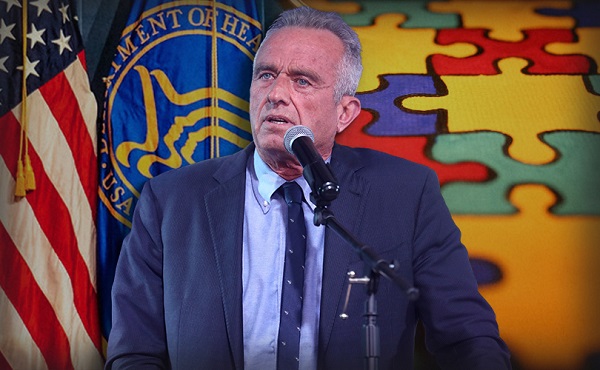Health
Pursuit Physiotherapy- Managing and Preventing Carpal Tunnel Syndrome
Management & Prevention of Carpal Tunnel Syndrome
Carpal tunnel syndrome is one of the most commonly diagnosed repetitive strain injuries. It occurs when the median nerve, which is the main nerve that travels down the inside of your forearm to your hand, becomes compressed or irritated as it passes through the carpal tunnel at the wrist. The carpal tunnel is an opening formed by ligaments and bones on the inside of the wrist which allow tendons and nerves to pass through it.
The problem is that this passageway is narrow and can be easily obstructed by local swelling and inflammation, usually from overuse or direct trauma. For example, repetitive work or leisure activities that involve a lot of gripping or use of the flexors (inner forearm muscles) can cause inflammation of the tendons. Similarly, long hours of computer work with improper ergonomics can cause excessive pressure on the inside of the wrist.
The common symptoms of carpal tunnel syndrome are numbness, tingling, or burning sensations in the palm of the hand and fingers, often accompanied by skin sensitivity and grip weakness. As the symptoms worsen people often experience sharp, shooting pain from the inner wrist up the forearm and decreased ability to use the affected hand.
Our treatment strategy is geared towards reducing the pressure on the carpal tunnel area and allowing the median nerve to function properly again. We are able to use a number of different treatment strategies such as:
-
Joint mobilization – stiff joints around the carpal tunnel can cause narrowing of the passageway and compression of the median nerve and flexor tendons. Using manual techniques we will loosen stiff joints and work to restore normal mobility and range of motion in the wrist and hand bones, taking pressure off the nervous tissue.
-
Soft tissue release – it is important to release tight muscles in the forearm and hand that may be compressing the median nerve and contributing to nerve pain and tightness. We can use a number of techniques to achieve this such as massage, cupping, acupuncture, and IMS.
-
Ergonomic correction – we will work with you to determine how to optimize your ergonomic set-up for work or home to minimize strain on your body. A brace may also be recommended to manage symptoms at work or at night. A brace will keep your wrist in a neutral position and prevent the wrist from flexing and compressing the carpal tunnel.
There are also a number of prevention strategies that you can use to reduce your risk of developing carpal tunnel syndrome:
-
Optimize your ergonomic set-up – position your keyboard and mouse so that your wrists are neutral and not hyperextended or flexed. Also be aware of your posture and try to keep your neck, shoulders, and back in a straight and relaxed position. Ergonomic equipment may also be useful especially for people who spend long hours at the computer. For more detail see the full blog on correct ergonomics.
-
Take regular breaks from repetitive activities – prevent tension and strain from building up in your tissues by planning regular breaks for stretching and changing position.
Seek help from a physiotherapist at the first signs of pain; don’t wait for it to get worse.
Carpal tunnel release surgery is also an option for chronic cases that do not completely resolve with physiotherapy; however it should be seen as a last resort. A course of physiotherapy treatment is always recommended before having an invasive procedure.
**It should be noted that NOT ALL WRIST AND HAND TINGLING IS DIAGNOSED AS CARPAL TUNNEL SYNDROME. Your nervous system is a continuous network of tissue, therefore nerve compression or irritation in other areas of the body such as the neck, back, shoulder, or elbow can contribute to or cause your hand symptoms. Especially if your condition is bilateral (symptoms on both sides), it is likely that body parts other than your wrist and hand require treatment.
As physiotherapists we are trained to comprehensively assess and diagnose your body as a whole and treat all the factors contributing to your pain. We can help ensure you get thorough treatment to eliminate your symptoms as quickly as possible and prevent it from becoming a chronic condition. Don’t try to treat it yourself off the internet! Leave it in the hands of the trained experts.
Health
RFK Jr. promises to identify cause of autism ‘epidemic’ by September

From LifeSiteNews
Robert F. Kennedy Jr. explained that autism rates continue to climb, and are now expected to impact 1 in 31 children, up from ‘1 in 10,000 when I was a kid.’
Health and Human Services (HHS) Secretary Robert F. Kennedy Jr. said that his agency has undertaken a multinational study involving “hundreds of scientists around the world” to identify the causes of the growing incidence of autism in children.
“We’ve launched a massive testing and research effort that’s going to involve hundreds of scientists from around the world,” Kennedy told President Trump during Thursday’s White House Cabinet meeting. “By September, we will know what has caused the autism epidemic, and we’ll be able to eliminate those exposures.”
Kennedy explained that autism rates continue to climb, and are now expected to impact 1 in 31 children, up from “1 in 10,000 when I was a kid.”
“It’s a horrible statistic,” Trump said of the latest autism rate figures. “There’s got to be something artificial out there that’s doing this.”
“There will be no bigger news conference than when you come up with that answer,” predicted the president.
As recently as 2000, Centers for Disease Control and Prevention (CDC) research showed that 1 in 150 children were diagnosed with autism.
While many mainstream autism researchers adhere to theories that the rising rate of autism is due to “increased awareness” and an evolving, broadening definition of autism, Kennedy holds to that belief that the cause will be found primarily in environmental factors, eating habits, and currently accepted standard medical protocols.
“We’re going to look at vaccines, but we’re going to look at everything. Everything is on the table, our food system, our water, our air, different ways of parenting, all the kind of changes that may have triggered this epidemic,” the HHS head told Fox News.
“It is an epidemic,” Kennedy insisted. “Epidemics are not caused by genes. Genes can provide a vulnerability, but you need an environmental toxin.”
“We know that it is an environmental toxin that is causing this cataclysm,” said Kennedy, “and we are going to identify it.”
Kennedy is known for vehemently opposing vaccines, a stance he adopted after the mothers of vaccine-injured children implored him to look into the research linking thimerosal to neurological injuries, including autism. He went on to found Children’s Health Defense, an organization with the stated mission of “ending childhood health epidemics by eliminating toxic exposure,” largely through vaccines.
The federal government spent more than $300 million on autism research in 2023, according to a report by The Hill.
Health
RFK Jr. Shuts Down Measles Scare in His First Network Interview as HHS Secretary

 The Vigilant Fox
The Vigilant Fox
CBS’s Jon LaPook tried to hype the measles panic, but Kennedy calmly dismantled the narrative and set the record straight.
The following is a streamlined and editorialized version of a thread that originally appeared on the American Values X page. It was edited and republished with permission. Click here to read the original thread.
HHS Secretary RFK Jr. recently set the record straight in an interview with CBS News’ chief medical correspondent, Dr. Jon LaPook. He pushed back on the claim that a second child had died from measles, exposing the narrative as not just misleading, but flat-out false.
But before that happened, Kennedy addressed the current measles outbreak and ongoing concerns about vaccine safety. He revealed that new safety trials are finally in motion.
“We don’t know the risks of many of these products,” he said. “They’re not adequately safety-tested.” He explained that “many of the vaccines are tested for only 3-4 days with NO placebo group.”
Kennedy made it clear this isn’t about banning vaccines—it’s about transparency. “I’ve always said … I’m not gonna take people’s vaccines away from them,” he said. “I’m gonna make sure that we have good science so that people can make an informed choice.” He added, “We are doing that science today.”
Kennedy was asked about Daisy Hildebrand, the young girl in Texas whose funeral he attended. Her death had been cited in headlines as proof of a growing measles crisis.
“It was very nice to be able to meet the parents in person and spend the whole day with them and share their lives with them and get to know their community,” he said. “The community was very welcoming and loving towards me.”
Kennedy described the experience warmly: “The Mennonite community was beautiful to me.” He added, “I went to a large lunch with the whole community and you had boys and girls sitting together and nobody was on a cell phone.”
That’s when Kennedy dropped the real bombshell: the child didn’t die from measles.
“The child whose funeral I attended this week was hospitalized three times from other illnesses,” he said. “She got measles and she got over the measles, according to her parents.” He added, “I saw the medical report on it today and the thing that killed her was not the measles, but it was a bacteriological infection.”
And it wasn’t the first time the media misled the public. Last month, another child’s death was falsely blamed on measles. But the truth is that it was a case of catastrophic medical error.
“Her death is the result of an egregious medical error,” CHD’s Mary Holland told Steve Bannon. “This girl wound up in the hospital because she did have some difficulty breathing, and instead of giving her breathing care, you’ll understand from the specialists with me that she got inaccurate, wrong-headed medical care, and that’s why she died.”
She added, “She did not die from measles. She died from a medical error, the third leading cause of death in this country.”
Thanks for reading. If you value the work being published here, upgrading your subscription is the most powerful way to support it. The more this Substack earns, the more we can expand the team, improve quality, and create the best reader experience possible.
For the full experience, upgrade your subscription.
-

 Business2 days ago
Business2 days agoStocks soar after Trump suspends tariffs
-

 COVID-192 days ago
COVID-192 days agoBiden Admin concealed report on earliest COVID cases from 2019
-

 Business2 days ago
Business2 days agoScott Bessent Says Trump’s Goal Was Always To Get Trading Partners To Table After Major Pause Announcement
-

 2025 Federal Election1 day ago
2025 Federal Election1 day agoResearchers Link China’s Intelligence and Elite Influence Arms to B.C. Government, Liberal Party, and Trudeau-Appointed Senator
-

 Business1 day ago
Business1 day agoTimeline: Panama Canal Politics, Policy, and Tensions
-

 COVID-191 day ago
COVID-191 day agoFauci, top COVID officials have criminal referral requests filed against them in 7 states
-

 2025 Federal Election2 days ago
2025 Federal Election2 days agoRCMP memo warns of Chinese interference on Canadian university campuses to affect election
-

 2025 Federal Election2 days ago
2025 Federal Election2 days agoThe status quo in Canadian politics isn’t sustainable for national unity











